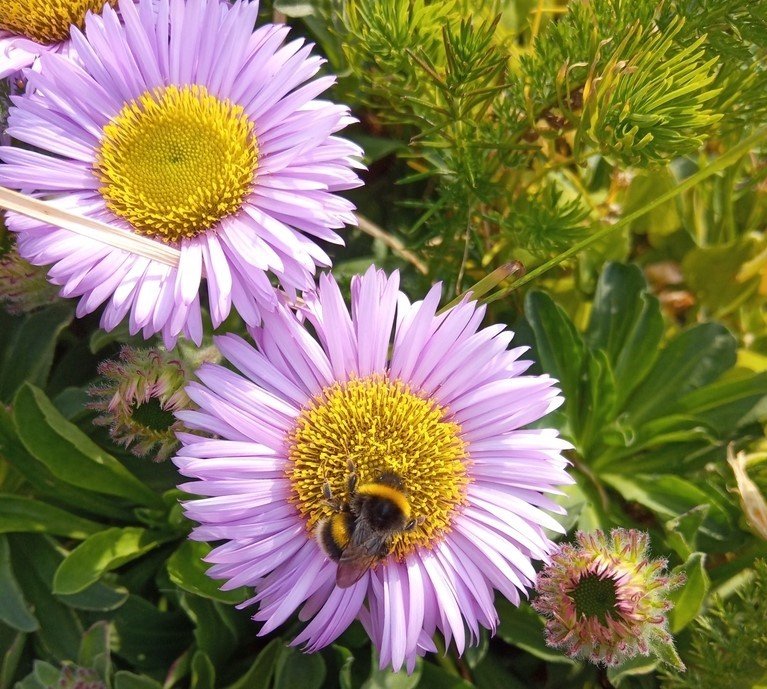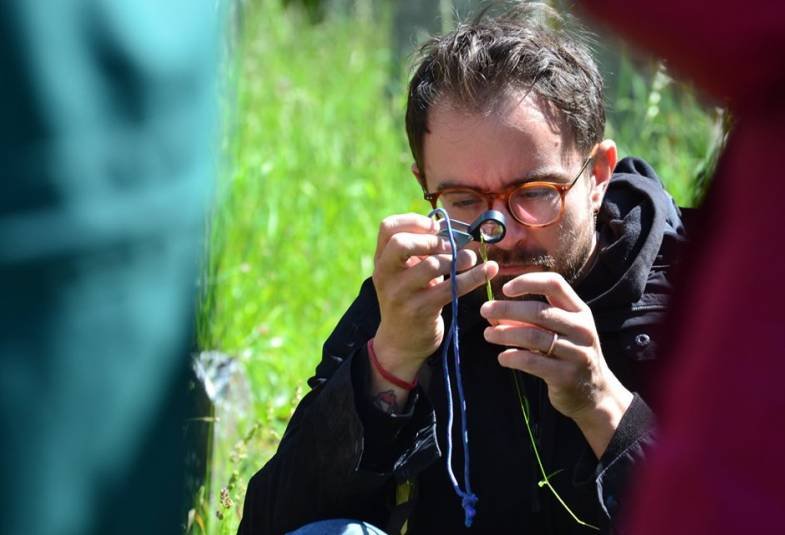Bumblebees find safe haven in churchyards

A recent survey shows that bumblebees, ladybirds and aphids are in the top five invertebrates found in churchyards.
Bumblebees were the most reported insect found in sensitively managed churchyards and burial grounds in this year's Churches Count on Nature survey.
The survey was conducted by volunteers in local communities who recorded wildlife as part of Love Your Burial Ground Week, June 3-11. It was a joint initiative promoted by Caring for God’s Acre, the Church in Wales, the Church of England and A Rocha UK.
Churchyards can form unique habitats for nature. Having escaped the plough, development, and the intensive use of chemicals, they have often remained undisturbed for centuries. As a result, churchyards host an abundance of wildlife; often featuring flower-rich grassland and lichen-encrusted memorials, as well as being home to most of the ancient yew trees in the UK. Participants conducted a survey of the wildlife in their chosen patch and recorded the numbers and types of plants, insects and animals found there.
As churches we are stewards of this treasure
Though we are a nation of gardeners, the insects that share our shrubberies can often pass us by - from the colourful British crab spider nestling in flower blooms to the busy hummingbird hawkmoth swooping across churchyards at dusk.
Liam Taylor, a data manager at Caring for God’s Acre, said of this year’s findings, “We are really pleased that more than 300 of the records submitted using iNaturalist [an app developed to record nature observations] during the week were of invertebrates.
“There is a tremendous amount of diversity in the species recorded – over 150 different taxa. So far, the records coming in show the top invertebrates spotted to be bumblebees, ladybirds and aphids.
“Over the last century, bumblebees have been in decline mainly because of large-scale changes to the way the countryside is managed. Some of the rarer bumblebee species forage only around 500 metres to 1km from the nest, so churchyards must be both flower-rich and diverse to provide enough flowers to sustain the colony each year. These records are showing how valuable, when managed sensitively, many of our churchyards are for bumblebees!”

Harriet Carty, Director of Caring for God’s Acre, explained just how many people are involved in keeping these spaces special.
“We estimate that well over 150,000 volunteers help manage these green oases. Their work includes repairing boundary walls, cutting the grass, enhancing the wildflower areas, looking after trees and surveying the memorials and wildlife.
“This has been a week-long celebration of these precious places with the aim of encouraging people to discover more about them.”
The Archbishop of Wales, Andrew John, encouraged people to take part in Churches Count on Nature. He said, “We take our churchyards for granted and don’t really have much to do with them. People come to visit graves, cut the grass occasionally but on the whole they are left undisturbed – peaceful places that we tend to just let be.
“And that is their strength. After centuries of being left alone, they are now almost unique in being havens of wildlife. From great yew trees to slow worms, plants and animals have been able to make their homes there, with minimal human interference, and thrive.
“As churches we are stewards of this treasure and good stewardship means looking after it and protecting it for generations to come.”
Events ranged from biodiversity ‘nature counts’ in churchyards, to memorial recording and tours in urban cemeteries. Individuals took part by recording the wildlife in their local burial ground using the iNaturalist app or by attending an event near them.
This year, more than 400 counting activities took place and records are starting to come in.
- Churches Count on Nature 2024 will be held from Saturday June 8 to Sunday June 16.
Find out more
- View the map of events that took place.
- Watch the webinars held by the Church of England as part of Churches Count on Nature.
- Churches Count on Nature is an annual event run collaboratively by the Church in Wales, Caring for God's Acre , A Rocha UK and and the Church of England